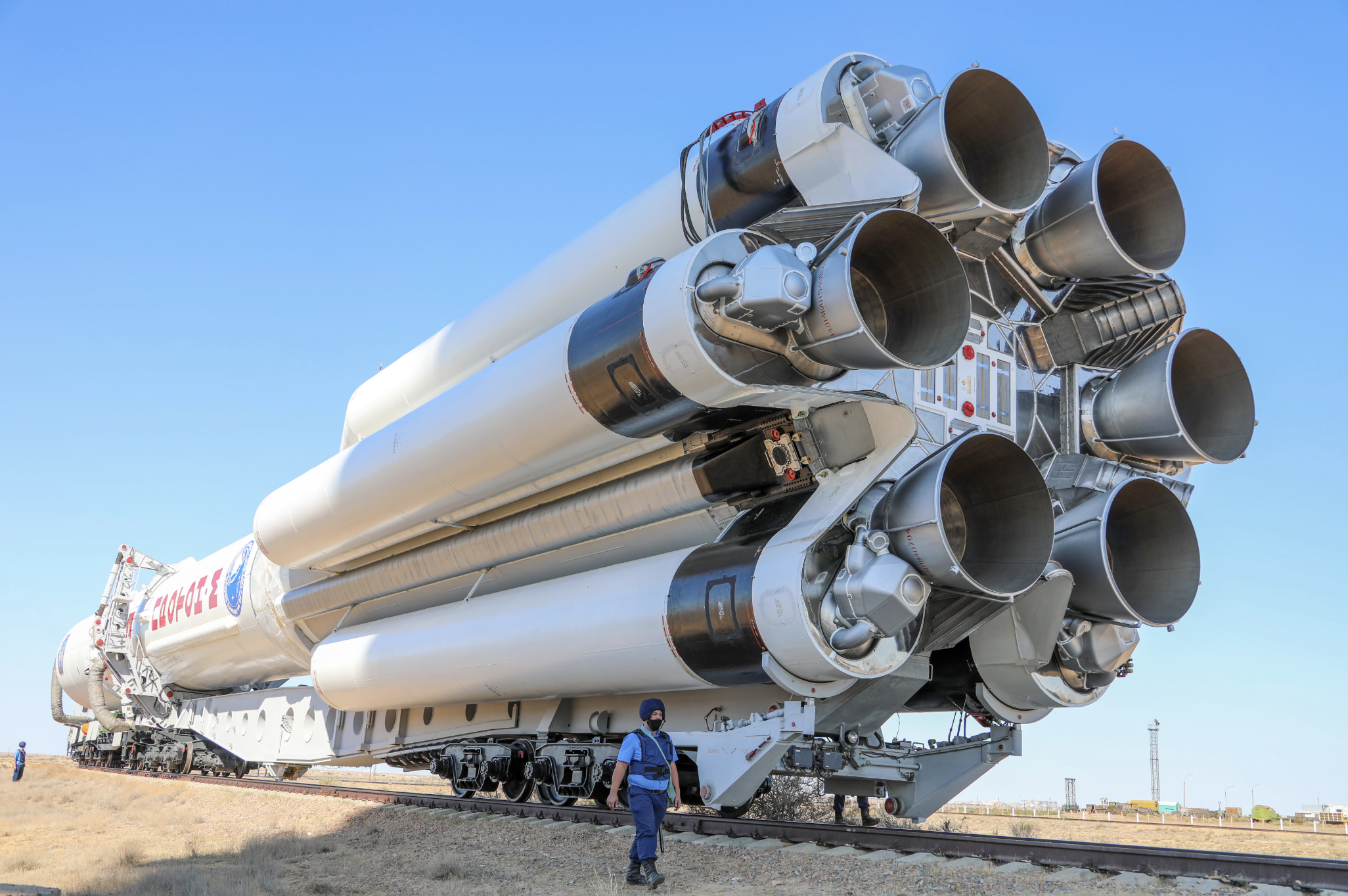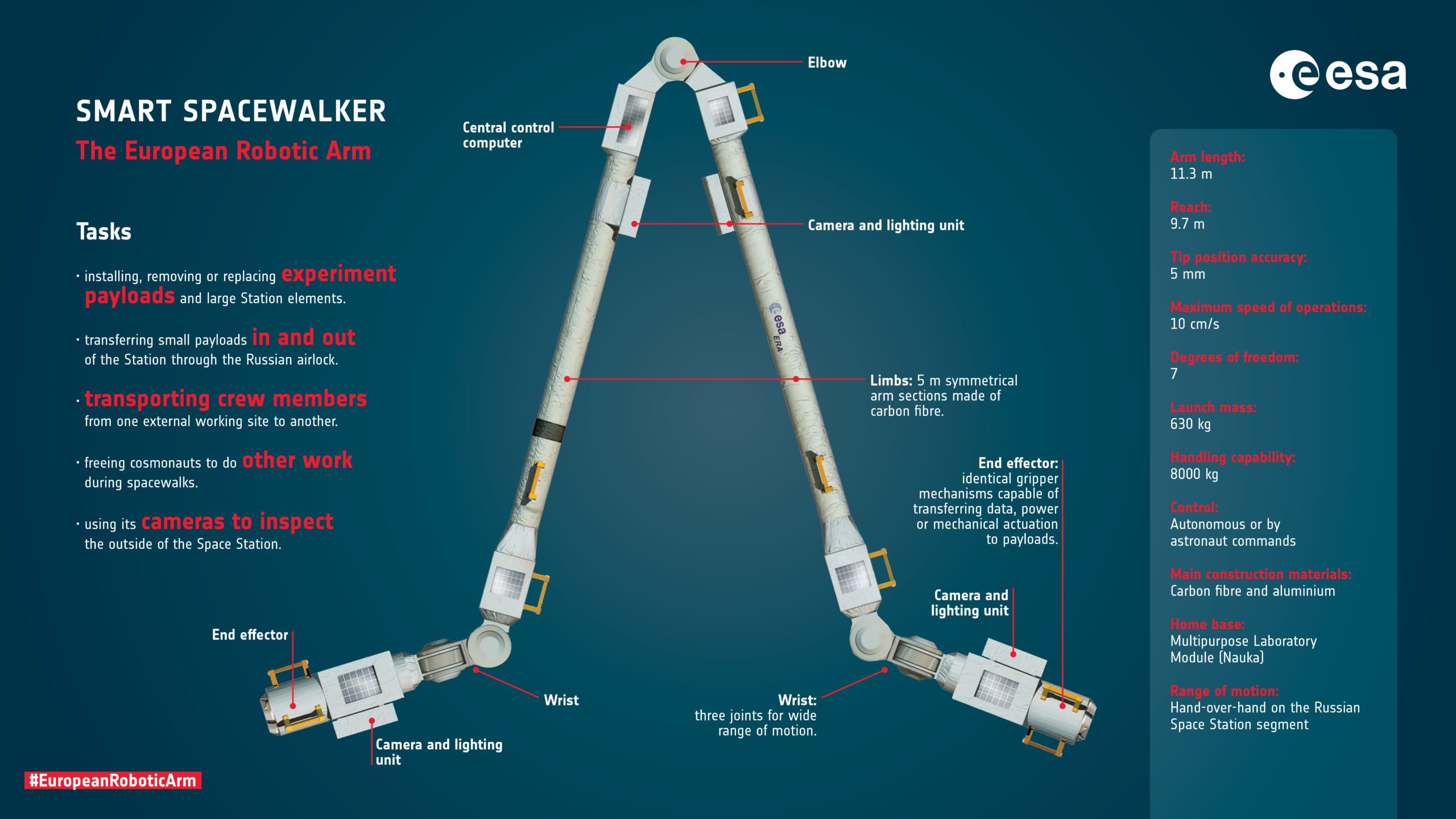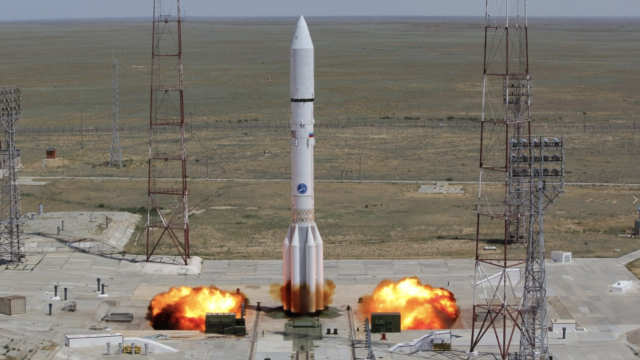On Thursday morning, Russia will attempt to launch a Proton-M rocket to the International Space Station. The purpose of the mission is to deliver Russia’s new “Nauka” module to the ISS, along with a sleek new robotic arm built by a European consortium. You can watch the action live right here.
The Proton-M carrier rocket is scheduled to launch at 12:58 a.m. AEST on Thursday, July 22 from the Baikonur Cosmodrome in Kazakhstan. Packed atop the rocket is a new ISS module formally known as the Russian Multipurpose Laboratory, but friends know it as Nauka. The European Robotic Arm (ERA), built for the European Space Agency, is coming along for the ride. NASA’s coverage of the launch begins at 12:30 a.m. AEST.
The cargo won’t arrive at the ISS until July 29, at which point the module will dock to the nadir docking point of the Zvezda service module, according to Roscosmos. This port is currently occupied by the Pirs docking compartment, which has been in service for 20 years. Pirs will detach from the ISS on July 24 and then burn up on reentry through Earth’s atmosphere (this procedure is contingent on a successful launch of the Nauka module). As NASA Spaceflight reports, Pirs will be the first ISS module “to be decommissioned and removed from the outpost.”

Roscomos says Nauka is “meant to expand the functionality of the Russian segment of the International Space Station.” The new segment will provide more room for running experiments and storing cargo and equipment (including water and oxygen regeneration equipment) and will “improve the conditions of cosmonauts’ stay.”

Once deployed and working, ERA will be the first robotic joint to service Russian segments of the ISS. The 11.28 m-long arm has autonomous capabilities, and it will be capable of “walking” along the exterior of the ISS. Moving like an inchworm, the arm will latch its end-points to anchors located on the surface of the orbital outpost.
ESA astronauts Thomas Pesquet, Matthias Maurer, and Samantha Cristoforetti will support the installation of the arm, both from inside and outside the ISS. Installation of the arm will require five spacewalks, according to ESA. The first tasks for the new arm will be to set up an airlock and radiator for the Nauka module.
